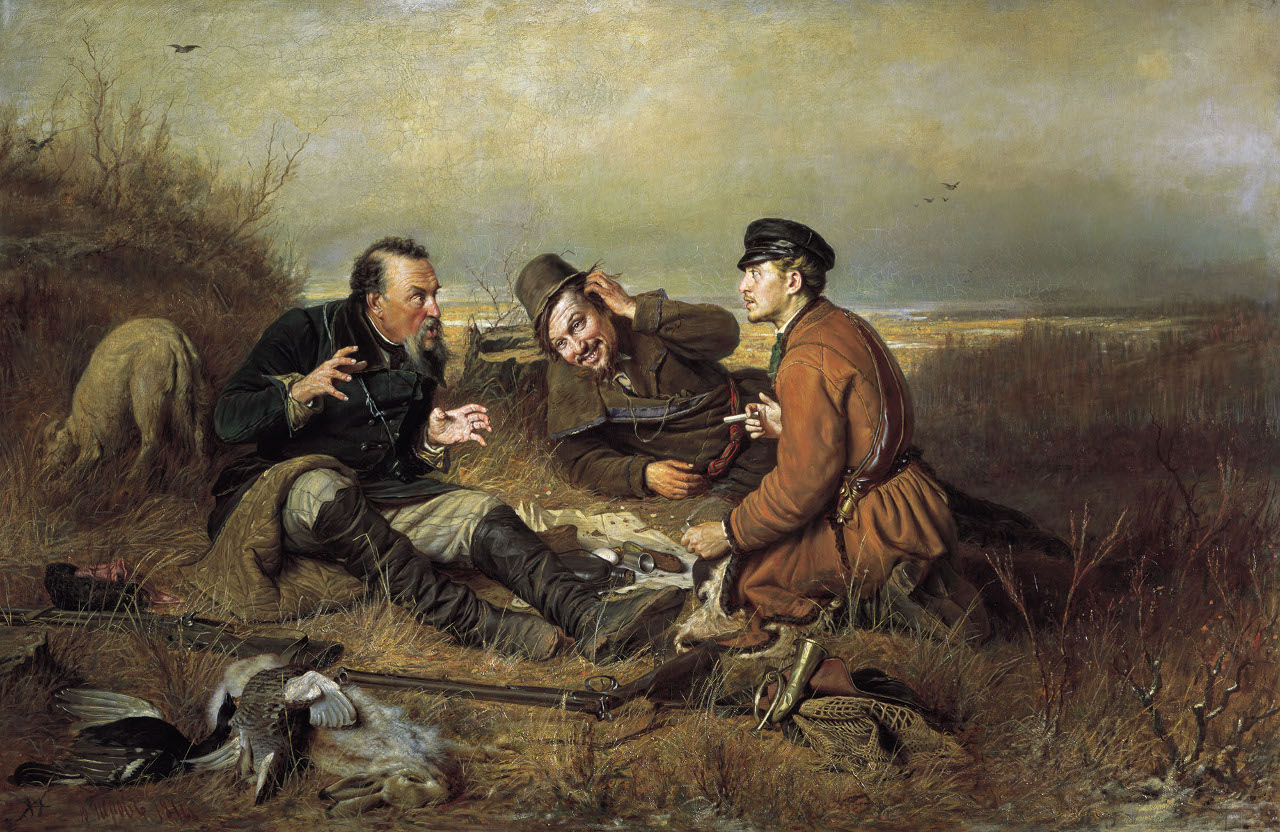Association of Traveling Art Exhibitions
ASSOCIATION OF THE Wanderers(“Association of Traveling Art Exhibitions”), the largest of the Russian artistic associations 19th century
An inspirational example for him was the "St. Petersburg Artel of Artists", which was established in 1863 by participants in the "rebellion of fourteen" (I.N. Kramskoy, A.I. Korzukhin, K.E. Makovsky and others) - graduates of the Academy of Arts, defiantly left it after the Council of the Academy forbade writing a competitive picture on a free plot instead of an officially proposed theme from Scandinavian mythology. Standing up for the ideological and economic freedom of creativity, the “artels” began to arrange their own exhibitions, but by the turn of the 1860s and 1870s, their activities had practically come to naught. A new stimulus was the appeal to the "Artel" (in 1869) by a group of Muscovite artists (L.L. Kamenev, G.G. Myasoedov, V.G. Perov, I.M. Pryanishnikov, A.K. Savrasov and V.O. Sherwood) with a proposal to jointly organize a new “Partnership”, and in 1870 its charter was approved, signed by N.N. Ge, Kamenev, M.K. , K.E. Makovsky , N.E. Makovsky , Myasoedov , Perov , Pryanishnikov , Savrasov , Shishkin and V.I. Yakobi . The charter set as the goal of the association “the arrangement, with proper permission, in all cities of the empire of traveling art exhibitions, in the form of: a) providing the inhabitants of the provinces with the opportunity to get acquainted with Russian art and follow its progress; b) development of love for art in society; and c) making it easier for artists to market their works.” Thus, in fine arts For the first time in Russia (with the exception of "Artel") a powerful art group arose, not just a friendly circle or a private school, but a large community of like-minded people, which assumed (despite the dictates of the Academy of Arts) not only to express, but also independently determine the process of development of artistic culture according to the whole country.
The theoretical source of the creative ideas of the "Wanderers" (expressed in their correspondence, as well as in the criticism of that time - primarily in the texts of Kramskoy and the speeches of V.V. Stasov) was the aesthetics of philosophical romanticism. The new art, liberated from the canons of academic classics, “art in its highest manifestation”, was called upon to reveal to the world “what history will say about it (the world)” (Kramskoy, A look at historical painting), - actually open the very course of history, thereby effectively preparing the future in their images. Among the Wanderers, modernity first of all appeared as such an artistic and historical “mirror”: the central place at the exhibitions was occupied by genre and everyday motifs, “all of Russia” in its many-sided everyday life. Genre beginning set the tone for portraits, landscapes and even images of the past, as close as possible to the "spiritual needs of society." In the later tradition, including the Soviet tradition, which tendentiously distorted the concept of "peredvizhniki realism", the matter was reduced to socially critical, "revolutionary-democratic" subjects, of which there really were quite a few (and they caused constant nit-picking by the censors). It is more important to keep in mind the unprecedented analytical and even visionary role that was given here not so much to the notorious social “questions”, but to art as such, creating its own sovereign judgment on society and thereby separating itself into its own ideally self-sufficient artistic realm. Such aesthetic sovereignty, which grew over the years, became the immediate threshold of Russian symbolism and modernity (at least in the work of such prominent "wanderers" as V.M. Vasnetsov, A.I. Kuindzhi, I.E. Repin, V.I. Surikov or the same Kramskoy).
The exhibitors of the "Partnership" included (in addition to the above artists) A.P. Bogolyubov, A.M. Vasnetsov, K.F. Gun, N.N. Dubovskoy, I.I. Levitan, V.M. Maksimov, N. V.Nevrev, I.S.Ostoukhov, V.D.Polenov, K.A.Savitsky, V.I.Surikov, N.A.Yaroshenko and many others. At regular exhibitions (there were 48 in total), which were shown first in St. Petersburg and Moscow, and then in many other cities of the empire, from Warsaw to Kazan and from Novgorod to Astrakhan, over the years one could see more and more samples of not only ”, but also modernist (impressionism) style. Difficult relations with the Academy eventually ended in a compromise, since by the end of the 19th century. (following wishes Alexander III"stop the bifurcation between artists"), a significant part of the most authoritative "Wanderers" was included in the academic professorial staff.
At the beginning of the 20th century in the Fellowship, friction between innovators and traditionalists intensified. The "Wanderers" have ceased to represent themselves, as they themselves are accustomed to consider, everything artistically advanced in Russia, and modernist-minded youth made a choice in favor of other groups - starting with the "World of Art". The face of the “Partnership” itself was now determined in its own way by masterful, but stylistically retrograde artists such as V.N. Baksheev, V.K. .Radimov, G.K.Savitsky. Society was rapidly losing its influence. In 1909, his provincial exhibitions ceased. The last significant burst of activity took place in 1922, when the society adopted a new declaration, expressing its desire to "reflect the life modern Russia", in order to "help the masses to realize and remember the great historical process." However, the same tasks were soon assigned to the newly formed AHRR, with which the Wanderers practically merged (the last chairman of the Partnership, Radimov, became one of the founders of the AHRR), so that 1922 turned out to be his last.
Literature Association of Traveling Art Exhibitions. Letters, documents, tt. 1-2. M., 1987
Roginskaya F.S. Wanderers. M., 1993
The legacy that the Wanderers left behind is truly great and multifaceted. It was they who began to portray in their paintings ordinary people, their way of life, customs, experiences and emotional condition. On the canvases of the Wanderers, you can also see scenes from Russian history, personifying the unbending strength of the spirit of the common people. Among the masterpieces of this era, there are also portraits of eminent people and nobility.
The history of the partnership
The Wanderers were the first Russian realists. They contrasted their work with strict academic canons, far from modern reality and the demands of modern life. The Association of Traveling Exhibitions was organized in St. Petersburg. The history of this community is interesting. In 1863, fourteen of the best graduates of the Academy of Arts demanded permission from the leadership to free choice themes of the competition picture. Having been refused, the young students, without hesitation, withdrew from the educational institution by organizing a free artel. In 1870, on the initiative of V. Perov, they together created the Association of Traveling Exhibitions. The first exposition was opened already in 1871. In their works, young realists sought to portray the true life of the constantly suffering and oppressed peasantry, under the rule of the rich and landowners. The exhibitions organized by the Wanderers were a huge success, and among the most diverse segments of the population.
Forty-eight exhibitions have been held in Moscow, St. Petersburg, Riga, Yaroslavl, Tula, Saratov, Chisinau, Kazan, Kursk, Voronezh, Poltava, Kharkov, Odessa, Kyiv and other cities throughout the existence of the association. "People's expositions" also began to take place in small towns, villages and villages. The enlightenment of the common people is one of the ideas pursued by the Wanderers. The list of members of this community includes the best sculptors and painters of the nineteenth and twentieth centuries. Among them are the well-known V. Petrov, I. Kramskoy, K. Savitsky, G. Savrasov, A. Kuindzhi, I. Shishkin, I. Repin, V. Vasnetsov, I. Levitan, S. Ivanov, A. Arkhipov and other eminent figures .
Creative activity
On November 29, 1871, the opening of the first traveling exhibition took place in St. Petersburg. The exhibition featured works by sixteen painters. Forty-seven canvases were put up for the audience to judge. Later, already in Moscow, the number of exhibited paintings reached 82. The same exposition was later transferred to Kyiv and Kharkov. Such paintings by Russian Wanderers as “May Night” (I. Kramskoy), “Hunters at Rest”, “Portrait of the Merchant I. S. Kamynin”, “Fisherman”, “Portrait of A. N. Ostrovsky” (V. G . Perova), "The Rooks Have Arrived" (A. Savrasova), "Employed" (I. Pryanishnikova) entered the history of Russian art. In their works, the realists relied not only on the experience of domestic painting, but also on the achievements of classical and modern world art. Many members of the association different years in the direction of the Academy of Arts, they visited foreign countries, where they adopted the experience of their colleagues, studied painting of various eras and styles. They realized their observations and impressions from what they saw in their works. The work of the Wanderers largely determined the movement of world painting of the nineteenth-twentieth centuries.
Alexey Savrasov

Landscape painter. He is one of the founders of the Association of Wanderers. In 1844, against the will of his father, the young artist entered the painting school, which he successfully graduated in 1850. The first landscapes of Alexei Kondratievich - "View of the Kremlin in inclement weather", "View of Moscow from the Sparrow Hills" - are imbued with the ideas of romanticism. Savrasov actively participates in exhibitions, teaches at the School of Sculpture and Painting. In 1862, he traveled abroad, where he visited the London Art Exhibition, Paris, Munich, Dresden, Berlin, Copenhagen, etc. German and English painters especially attracted the attention of the artist with their desire for independence and truth. During this period, Alexei Kondratievich wrote one of his famous paintings - "Elk Island", for which he was later awarded a prize at a competition in Moscow. Since 1870, he and his wife have been traveling around Russia (Kostroma, Yaroslavl, Novgorod). He conveys his impressions of the beauty of his native nature in paintings. This is how the "Spill of the Volga" and "The Rooks Have Arrived" appear. It was these paintings that were presented at the first exhibition organized by Russian Wanderers. In the works written in the 870s, anxiety and sadness are felt more and more: “Sunset over the swamp”, “Moonlit night”, “Graves over the Volga”, “Rye”. Last years The artist spent his life in deep need.

Ivan Shishkin
The names of the Wanderers are known far beyond the borders of the Motherland. A vivid example of this is I. Shishkin. It is with his name that the history of the domestic landscape is connected, his creations have become national classics and gained immense popularity. The future artist was born in the small town of Yelabuga in the family of a merchant in 1832. In 1848 he entered the Kazan Gymnasium, but did not graduate from it. Returning home, for a long time is in search of his future path. At the age of twenty, young Shishkin enters the school of painting, where he plunges headlong into study and creativity. The artist is constantly painting. He is inspired by nature, forest and village landscapes, peasant life. The first work of Shishkin that has come down to our times is Pine on a Rock. The oil painting was painted in 1855. In 1856 Ivan Ivanovich entered the Academy of Arts (Petersburg). His early works are imbued with romance. In 1858, he paints one of his most famous paintings, View on the Island of Valaam. For this work in 1860 at the academic exhibition he was awarded a gold medal. After graduating from the Academy (1860), Shishkin went abroad. During this period, he creates a well-known masterpiece "View in the vicinity of Düsseldorf", presented at an exhibition in Paris. Upon returning to his homeland, Ivan Ivanovich becomes close to I. Kramskoy, the founder of the Artel of Artists. In subsequent years, he painted a number of landscapes ("In the vicinity of Moscow", "Deforestation", "Ship Grove", "Stream in the Forest"). He constantly exhibits his works at expositions organized by Russian Wanderers. To this day, the masterpieces of this great landscape painter are very popular.
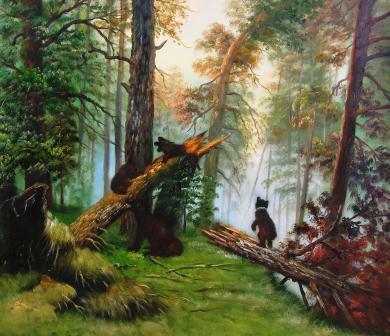
Ivan Nikolaevich Kramskoy
Russian Wanderers of the 19th century created a huge portrait gallery. In their work, they portrayed the best people countries, prominent figures of science and culture. Many masterpieces were commissioned by a well-known philanthropist and collector. I. Kramskoy was a truly brilliant portrait painter. The strengths of this talent bright artist and a psychologist appeared in the portrait of Leo Tolstoy. This masterpiece was painted in 1873 in Yasnaya Polyana. The artist brings to the fore the clear and wise mind of the writer. The image of the famous Russian writer is built on the basis of contrast (internal significance and external simplicity). One more meaningful work Kramskoy is the painting "Inconsolable grief", conveying the depth of maternal feelings. In 1860-1870, he actively participated in the organization of exhibitions, which were held by the Wanderers. Kramskoy's work "Christ in the Desert" was presented at the second exposition. The artist's legacy is mainly made up of portraits of ordinary people: "Woodsman", "Unknown", "Peasant with a bridle", etc.

Ilya Efimovich Repin
Perhaps the most significant phenomenon in the history of Russian painting was the painting "Barge Haulers". In his work, the artist vividly showed the image of the common people. Before Repin, no one had addressed such a deeply tragic and amazing plot. In this masterpiece, the artist showed his mastery of all the means of art to perfection. Another significant creation of Repin is "The procession in the Kursk province." Written in 1883, the picture attracts with an unusual pictorial and compositional solution. The religious procession depicted in the painting personifies the collective image of the village with all its groups and classes. With special love and sympathy, the author managed to draw images of ordinary peasants. A special place in the painter's work is occupied by revolutionary themes. He created the paintings "Under escort", "They did not expect", "Refusal of confession". In the 1880s, Ilya Efimovich turned to the portrait genre, depicting prominent figures of our time, such as D. Mendeleev, A. Delvig, M. Glinka and others.
Vasily Maksimovich Maksimov
He received his first artistic skills in icon-painting workshops. Vasily Maksimovich graduated from the Petersburg Art Academy by class The artist devoted all his work to depicting the original peasant world. His paintings do not amaze with the sharpness of the plots and bright colors. However, this feature only attracted the attention of art lovers. His most famous works are: “Everything is in the past”, “Sick husband”, “Family section”. Like many other Wanderers of the 19th century, Vasily Maksimovich in his work sought to reflect the creative ideals and values of his time as much as possible.
Vasily Grigorievich Perov
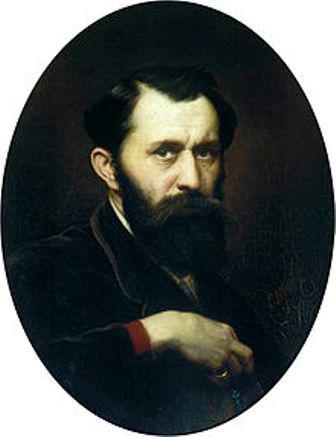
Born in Tobolsk in 1834. The young artist enters the School of Painting. His first significant work is "The arrival of the policeman for the investigation." Masterpieces written in his younger years were a huge success at traveling exhibitions. Soon, Vasily Grigorievich was awarded a gold medal for the painting "Sermon in the Village". His first paintings reflect the socio-critical orientation of the author. A vivid example of this is the "Rural Procession for Easter", "Sermon in the Village", etc. In later years, Perov acts as a portrait-landscape painter. He owns portraits of F. Dostoevsky and it was Vasily Grigorievich who was one of the initiators of the active actions of the Partnership.
Abram Efimovich Arkhipov

This artist is given an important place in genre painting of that time. In his masterpieces, Arkhipov depicted the life of simple rural people as truthfully as possible. His paintings "Reverse", "On the Oka", received wide recognition throughout the world. In some of his works, he reveals social problems ("Washerwomen", "Labormaids", etc.), depicting hard peasant labor.
Artel of free artists, organized in 1863 after the demonstrative exit from the Academy of its graduates - competitors for a large gold medal("revolt of fourteen"), for a number of years was a kind of artistic center in St. Petersburg, opposing the Academy and its art, far from the demands of life, from modern reality. Moscow artists Myasoedov, Perov, V. E. Makovsky, Pryanishnikov, Savrasov at the end of 1869 suggested that the St. Petersburg Artel unite all together and form a new society. In 1870, the "Partnership", already approved by the government, began its activities. Ivan Nikolaevich Kramskoy, who in 1870 became one of the founding members of the Association, its leader and ideological inspirer, played a very important role in the creation of the Society of Wandering Artists. By the time the Association was created, the St. Petersburg Artel had almost ceased to exist, and some of its members joined the new association. The main thing that the members of the new organization managed to achieve first of all was the organization of independent exhibitions and their movement around the cities of Russia. "Wanderers", as the members of the Association began to be called, set themselves the task of the widest propaganda of art and the social and aesthetic education of the masses. Already in the 50s and 60s of the 19th century, in contrast to the pseudo-classical art that was planted by the Imperial Academy of Arts, there was a close rapprochement with the life of democratic art. And with the advent of the Wanderers, the new art develops in a single vein with advanced Russian literature, music, theater, social thought, forming a powerful stream of Russian democratic culture, inspired by the advanced social ideas of its time. Bogdanov-Belsky, Konenkov and others.
In the 70-80s of the 19th century, the activity of the Partnership reached its peak. The leading place in the traveling exhibitions belonged to the paintings of Repin, as well as Surikov, Kramskoy, Polenov, Nesterov, Myasoedov, Makovsky, Perov. In their work they reflected the most significant phenomena of the surrounding reality in all their complexity and contradiction. The Wanderers had a huge impact on all aspects of the artistic life of Russia, on the formation of national art schools. Among the members of the Association and exhibitors were artists of various nationalities. Many of them became the founders of the realistic, democratic art of their peoples.
The role of the Wanderers in art education is great. Many prominent Wanderers taught for many years at the Moscow School of Painting, Sculpture and Architecture (Perov, Savrasov, Pryanishnikov, Levitan, Serov, Polenov, Arkhipov and others). Since 1894, Repin, V. Makovsky, Kuindzhi, Shishkin, and later Kiselev, Dubovskoy and other artists have joined the professorship of the St. Petersburg Academy of Arts, which greatly increased the role and authority of the Academy as a center of art education.
In the 70s, progressive democratic painting is gaining public recognition. She has her own critics - I.N. Kramskoy and V.V. Stasov and his collector - P.M. Tretyakov. The time has come for the flowering of Russian democratic realism in the second half of the 19th century.
At this time, in the center of the official school - the St. Petersburg Academy of Arts - the struggle for the right of art to turn to real, real life was also brewing, resulting in 1863 in the so-called "Riot of 14". A number of graduates of the Academy refused to write a programmatic picture on one theme of the Scandinavian epic, when there are so many exciting contemporary problems, and, not having received permission to freely choose a topic, left the Academy, founding the "Petersburg Artel of Artists" (F. Zhuravlev, A. Korzukhin, K. Makovsky, A. Morozov, A. Litovchenko and others). In Kramskoy's apartment on the 17th line of Vasilyevsky Island, they created something like a commune, similar to that described in Chernyshevsky's novel, under whose influence almost all the raznochintsy intelligentsia was then. "Artel" did not last long. And soon the advanced artistic forces of Moscow and St. Petersburg united in Association of Traveling Art Exhibitions (1870). These exhibitions were called mobile because they were arranged not only in St. Petersburg and Moscow, but also in the provinces (sometimes in 20 cities during the year). It was like "going to the people" of artists. The partnership existed for over 50 years (until 1923). Each exhibition was a huge event in the life of a provincial town. Unlike Artel, the Wanderers had a clear ideological program - to reflect life with all its acute social problems, in all its topicality. V. G. Perov, I. N. Kramskoy, N. N. Ge and others, was “to free art from the bureaucratic routine”, to develop the accusatory tendencies of painting in the 1860s, to awaken the “public conscience” and at the same time show a positive image of a contemporary, to give moral guidelines for society. In November 1870, the Charter of the Partnership was approved, proclaiming realism, nationality (expressing the interests of the largest part of society), and revealing the spiritual foundations of Russian culture as the main principles of the artists' work. The first exhibition took place in 1871 in St. Petersburg, from where the paintings were sent for display in other cities. For the first time, the TPHV began to arrange "traveling" exhibitions, presenting their works to the public not only in St. Petersburg and Moscow, but also in Kyiv, Kharkov, Odessa, Kazan and other cities. The association existed until 1923, when the last, 48th exhibition was arranged, but the heyday of the art of the Wanderers came in the 1870s and 80s. The fee for visiting the exposition was divided among the members of the association, part of the proceeds were kept in the general fund. This made it possible to support financially needy members of the TPES, helping them to focus entirely on creativity. In addition, each artist could count on the sale of his works at traveling exhibitions. The commercial success of the TPHV was the key to the creative independence of its members. The Association did not restrict access to its ranks, which would be contrary to its democratic platform. However, the openness of the association to new members led to the fact that to the con. 1880s there were many weak artists in its ranks, and the lack of fresh ideas led to some stagnation, “shredding” of plots, and the repetition of former motives. In the 1890s many prominent members of the Association (I. E. Repin, V. E. Makovsky, I. I. Shishkin and others) became part of the St. Petersburg Academy of Arts .
Critical realism became the creative method of the Wanderers, the desire to embody the "truth of life". Any fiction, idealization, embellishment were considered a manifestation of the academic "lie". Thanks to the work of the Wanderers, art becomes a public platform in Russia; artists turn to acute social and ethical problems, solve educational problems. The Wanderers thought of their art as a high mission of public service. Their paintings are addressed to an indifferent, reflective and empathetic viewer. The art of the Wanderers was an expression of revolutionary democratic ideas in the national artistic culture second half of the 19th century household genre in the best works Wanderers is devoid of any anecdotal. The social orientation and high citizenship of the idea distinguish it in the European genre painting XIX in.
The partnership was created on the initiative of Myasoedov, supported by Perov, Ge, Kramskoy, Savrasov, Shishkin, the Makovsky brothers and a number of other "founding members" who signed the first charter of the Partnership. In the 1970s and 1980s, younger artists joined them, including Repin, Surikov, Vasnetsov, Yaroshenko, Savitsky, Kasatkin, and others. Since the mid-1980s, Serov, Levitan, and Polenov have taken part in exhibitions. The generation of the "senior" Wanderers was mostly diverse in social status. His worldview was formed in the atmosphere of the 60s.
The fundamental principle of the art of the Wanderers was critical realism. However, in their work, he acquired new features: a greater breadth and scale of coverage of life phenomena, the depth of social and psychological generalizations, and pictorial skill. The Wanderers introduced an active positive principle into realism, asserting the beauty and grandeur of folk characters, the poetry of nature, and the originality of Russian history. Genre (everyday) paintings they have become more monumental in terms of compositional decisions, more significant and deeper in terms of plot developments. For example, in the work of Repin I.E., they rose to the level of genuine social epics, turning into a kind of "novels" in colors, such as "Barge haulers on the Volga", "They did not wait", "The procession for Easter in the Kursk province "- like those works that were created by famous contemporaries L. Tolstoy, f. Dostoevsky, I. Turgenev.
Along with everyday painting, one of the leading genres in the art of the Wanderers was portrait. In the most complete disclosure of the nature of the person being portrayed, the Wanderers-portraitists saw the main goal of their activities. patriotic searches led them to establish in portrait art a wonderful gallery of portraits of prominent figures of Russian culture. The idea of the gallery was largely organized by the founder of the largest museum of Russian art, P.M. Tretyakov, who provided the Wanderers with enormous material and moral support.
The true hobby of the Wanderers can be called landscape painting. Almost all artists were engaged in it, as well as in a portrait. In the landscape, it was as if the recognition of the appearance of native nature took place simultaneously with the knowledge of the national folk life. Like everyday paintings, the landscapes of the Wanderers are almost always informative. enlivened by the invisible presence of man in them. many landscape paintings of the Wanderers are in the nature of some kind of lyrical statement of artists about the world, being an expression not only of his feelings and state of mind, but also a reflection on the fate of the country and the people living in it. This also applies to the works of the prose writer Shishkin I., the romantics F. Vasiliev, Kuindzhi A., and especially such lyricists as Savrasov A., Polenov V., Levitan I.
Has undergone major changes in the art of the Wanderers historical picture, which had enough in Russia wide use. The movement towards realism went here in two directions: the development of the national theme in the whole depth of showing the truth and originality national history in the art of Ge., Repin., especially Surikov and posing the most important moral problems for both Russian and human life, solved in traditional gospel stories - the line of Ivanov, Ge and other artists.
The partnership lasted until 1922.
Died very early F. Vasiliev (1850–1873). Painting "After the rain" (1869, State Tretyakov Gallery) 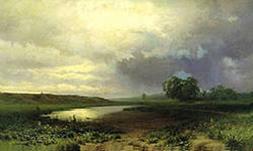
 Her lyricism is very close to Savrasov.
Her lyricism is very close to Savrasov.

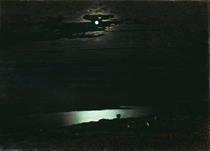 The famous "The Thaw" (1871, TG) and "Wet Meadow" (1872, TG) are full of deep mood and convey the smallest changes in nature: "the life of the sky", objects shrouded in mist, as in the "Thaw", or in a shroud of rain, as in Wet Meadow, while maintaining the generality, integrity of the picture, always imbued with a great poetic feeling. Conveying this change of states in nature, Vasiliev used the finest color relationships: from gray snow and leaden sky to a reddish forest and brown puddles in The Thaw, from darkening trees and their moving shadows to already bright water, a clearing sky - in Wet Meadow . “This grass is in the foreground and this shadow is of such a kind that I don’t know a single work of the Russian school where it would be so charmingly done,” wrote Kramskoy.
The famous "The Thaw" (1871, TG) and "Wet Meadow" (1872, TG) are full of deep mood and convey the smallest changes in nature: "the life of the sky", objects shrouded in mist, as in the "Thaw", or in a shroud of rain, as in Wet Meadow, while maintaining the generality, integrity of the picture, always imbued with a great poetic feeling. Conveying this change of states in nature, Vasiliev used the finest color relationships: from gray snow and leaden sky to a reddish forest and brown puddles in The Thaw, from darkening trees and their moving shadows to already bright water, a clearing sky - in Wet Meadow . “This grass is in the foreground and this shadow is of such a kind that I don’t know a single work of the Russian school where it would be so charmingly done,” wrote Kramskoy.
"Moonlight Night on the Dnieper" "Birch Grove"
A special place in the landscape of the second half of the XIX century. takes Arkhip Ivanovich Kuindzhi(1842(?) - 1910) with its striking lighting effects ("Ukrainian Night", 1876, State Tretyakov Gallery; "Birch Grove", 1879, State Tretyakov Gallery; "Moonlight Night on the Dnieper", 1880, Russian Museum), giving a romantic character to his landscapes, but also informing them of some theatricality, doneness, invention, in contrast to the truly realistic vision of other landscape painters of the itinerant circle. “Moonlight Night on the Dnieper” was a sensational success at the artist’s solo exhibition in 1880 due to its lighting effects. Kuindzhi left behind a whole school, heading the landscape workshop in the reformed Academy in the mid-90s, from which N.K. Roerich, A.A. Rylov and others.
Many artists, not being landscape painters, however, left their mark on landscape painting in the second half of the century. Among them Vasily Dmitrievich Polenov(1844–1927), who did a lot of everyday and historical genre. But even in the famous painting “Christ and the Sinner” (“Who is without sin?”, 1888, Russian Museum), the landscape plays a huge role. Polenov is a true reformer of Russian painting, continuing to develop it along the path of plein airism, following Alexander Ivanov. Even in retirement years  France Polenov wrote a lot in the open air (Norman studies). Upon his return to his homeland, he creates the painting “Moscow Courtyard” (1878, State Tretyakov Gallery), a real hymn to “patriarchal Moscow seen through the eyes of a Petersburger”: a typical Moscow hipped bell tower and church, a cozy Moscow mansion with an empire-style portico, playing children, a cart with a horse - all the peaceful life of the “purple-bearing widow” was conveyed by Polenov in the finest airiness of plein-air painting. His understanding of the etude as an independent artwork had a great influence on the painters of subsequent times.
France Polenov wrote a lot in the open air (Norman studies). Upon his return to his homeland, he creates the painting “Moscow Courtyard” (1878, State Tretyakov Gallery), a real hymn to “patriarchal Moscow seen through the eyes of a Petersburger”: a typical Moscow hipped bell tower and church, a cozy Moscow mansion with an empire-style portico, playing children, a cart with a horse - all the peaceful life of the “purple-bearing widow” was conveyed by Polenov in the finest airiness of plein-air painting. His understanding of the etude as an independent artwork had a great influence on the painters of subsequent times.
The successor of the traditions of Savrasov and Vasilyev in the Russian landscape late XIX in. was Isaac Ilyich Levitan (1860–1900),"a huge, original, original talent", the best Russian landscape painter, as Chekhov called him. Already his first, in fact, student work “Autumn Day. Sokolniki ”(1879, State Tretyakov Gallery), where the female figure was painted by his friend at the School of Painting, Sculpture and Architecture N. Chekhov, the brother of the great writer, was noticed by critics and bought by Tretyakov. The heyday of Levitan's creativity falls at the turn of the 80-90s. It was then that he created his famous landscapes "Birch Grove" (1885-1889, State Tretyakov Gallery),

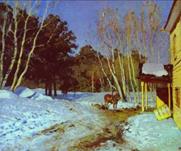

"Autumn day. Sokolniki "March" "Golden Autumn"


 "Evening Bells", "At the Whirlpool" (both 1892, Tretyakov Gallery), "March" (1895, Tretyakov Gallery), "Golden Autumn" (1895, Tretyakov Gallery). In "Vladimirka", written not only under direct impressions, from nature, but also under the influence of folk songs and historical information about this tract, along which the convicts were led, Levitan expressed his civic feelings by means of landscape painting.
"Evening Bells", "At the Whirlpool" (both 1892, Tretyakov Gallery), "March" (1895, Tretyakov Gallery), "Golden Autumn" (1895, Tretyakov Gallery). In "Vladimirka", written not only under direct impressions, from nature, but also under the influence of folk songs and historical information about this tract, along which the convicts were led, Levitan expressed his civic feelings by means of landscape painting.
"Vladimirka", "Above Eternal Peace". "Lake. Russia"
Levitan's pictorial quest brings Russian painting close to impressionism. His vibrating stroke, permeated with light and air, more often creates images not of summer and winter, but of autumn and spring - those periods in the life of nature when the nuances of mood and colors are especially rich. What Corot did in Western European (primarily French) painting as the creator of the landscape of mood, in Russian painting belongs to Levitan. He is primarily a lyricist, his landscape is deeply lyrical, even elegiac. Sometimes he is jubilant, as in March, but more often sad, almost melancholic. It is no coincidence that Levitan loved to depict autumn, autumn blurred roads so much. But he is also a philosopher. And his philosophical reflections are also full of sadness about the frailty of everything earthly, about the smallness of man in the Universe, about the brevity of earthly existence, which is a moment in the face of eternity (“Above Eternal Peace”, 1894, Tretyakov Gallery). The last work, interrupted by the death of the artist, "Lake" (1899-1900, Russian Museum), however, is full of sun, light, air, wind. This is a collective image of Russian nature, the motherland. No wonder the work has the subtitle "Rus".
Association of Traveling Art Exhibitions was most active in the last third of the 19th century. The paintings of the members of the society are imbued with the spirit of realism, the artists are turned to the present, and that is why they are valuable. And they are talented, see for yourself.
Post navigation
This painting is built on shades, not blues, not pinks, but shades of grey. Everything is covered in darkness - no, it's not true. A bright night, because the air is clean, there is no one, there are no smokes and reflections of cities. Night - there is life, there is no sound. Civilization is somewhere out there, beyond the horizon. Kuindzhi knew how to show the breadth of expanses native land, and bright colors of a small stage.
A summer picture is not necessarily “mignonette and a rhiza of porridge”, it is not always a bouquet on the terrace. Summer view - southern view. Roses and the sea, or mountains and pines. Levitan's sketch opens a series of summer publications.
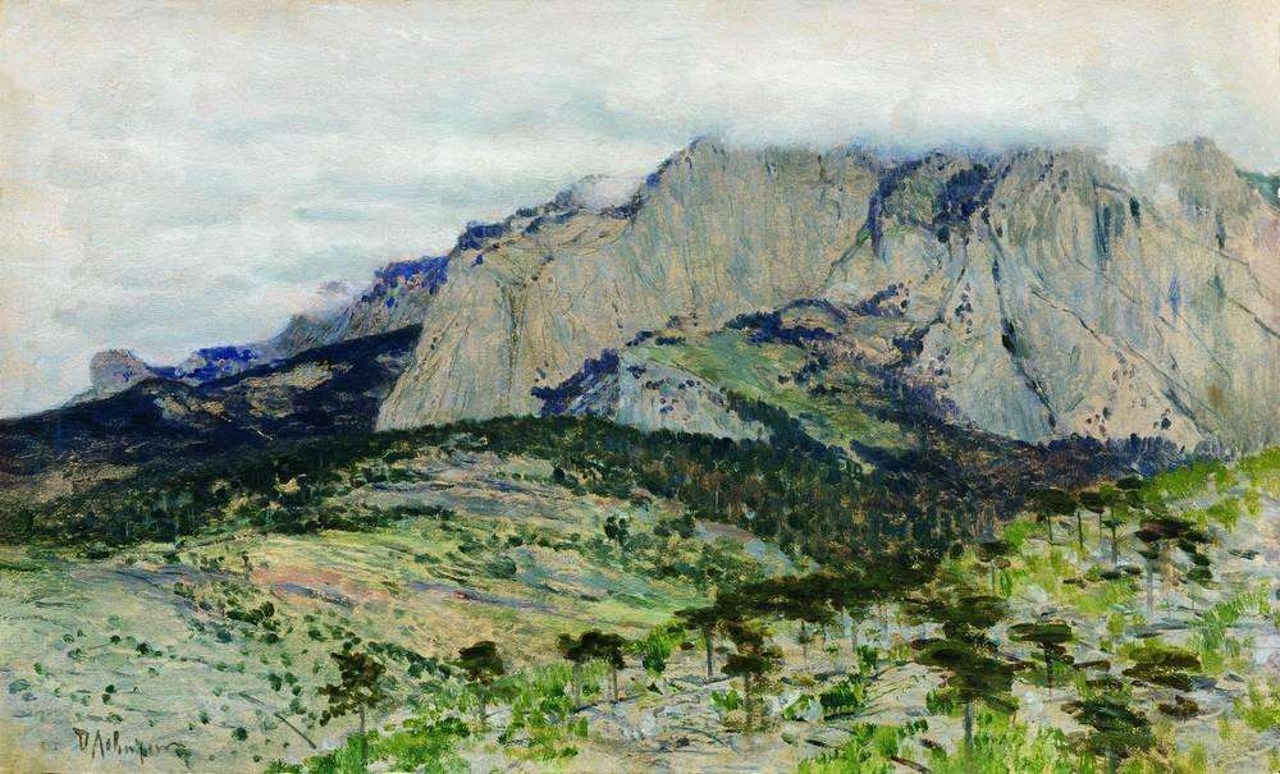
painting essays famous artists to the website
Not a wolf-top, a gray barrel, but a natural monster, Fenrir, a forest monster from the fairy tales of the northern peoples - such a truly FANTASTIC wolf in the picture of Viktor Vasnetsov. And as for the human characters, there is also something to analyze. It is hard for us, adults, to relive a fairy tale, but it is also difficult to fully understand the artist, her, the fairy tale, who draws. Let's try, however.

essays based on paintings by famous artists on the site
Alyonushka from Vasnetsov's painting is not an easy heroine. This work, for all the ordinary nature of the landscape, for all the fame of the fairy tale, is difficult to understand. So there is no need to understand. Should be worried. It's like listening to a fairy tale.

essays based on paintings by famous artists on the site
Excellent in elegance of color, ingenious in simplicity and semantic content of the plot, the painting by Isaac Levitan, it would seem, is just a “photograph” of a landscape with water, a bridge, a forest in which the bell towers and churches of the “Quiet Convent” are hidden. But let's think about the symbols and signs.

essays based on paintings by famous artists on the site
Levitan's painting “Spring. Big Water” is calm and joyful. Winter has already left, and all the snow has melted, and there was so much that it flooded houses and lowlands, and the boat became the only transport in some places ...

essays based on paintings by famous artists on the site
The picture of Viktor Vasnetsov, which showed the viewer a new, unusual, poignant and tragic art, is deceptively simple. Let's try to catch the meaning invested by the artist, although so many years have passed.

essays based on paintings by famous artists on the site
The Russian landscape in one of the most colorful manifestations is the damp after-storm calmness of the painting “Wet Meadow” Fyodor Vasiliev full of meaning. The painting can rightfully be considered one of the gems of the Tretyakov Gallery. Description of the painting Wet Meadow by Fyodor Vasiliev compositions based on paintings by famous artists on the site
Magnificent, full of figures and meanings, subtle and calm in color, the painting by Vasily Grigorievich Perov (Kridener) is a worthy work, and we will not miss it. Three hunters, after a good time, share their impressions and memories, they don’t even have time to eat :) Description of the painting Hunters on a halt by Vasily Perov →
